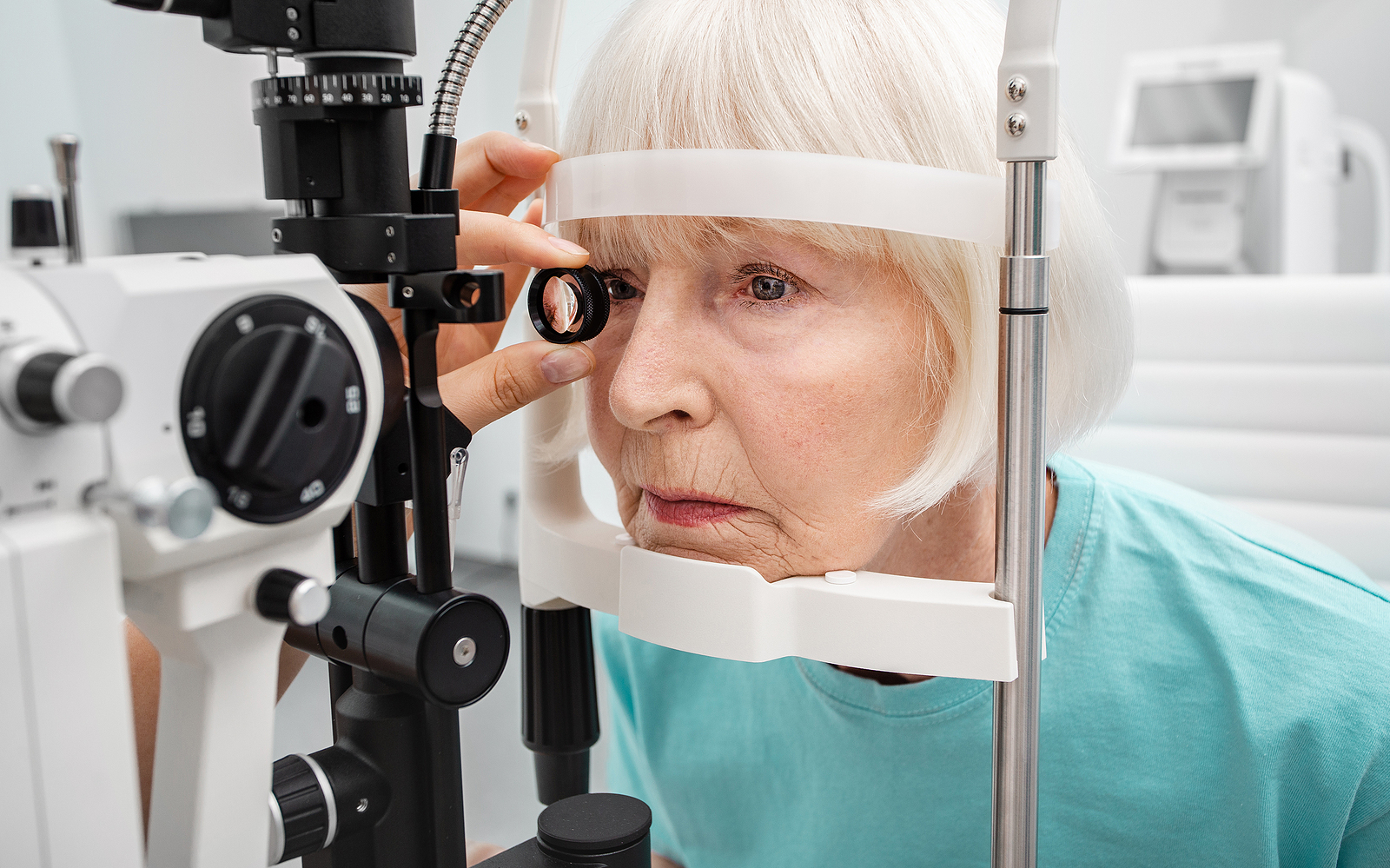Looking for Relief from Dry Eyes? You Might Have Dry Eye Syndrome.

Millions of American suffer from chronic dry eyes. Fortunately, many different treatment options exist for this common condition.
The American Academy of Ophthalmology reports that nearly five million Americans over the age of 50 suffer from dry eyes. As the name suggests, this common chronic condition results in moderate to severe dryness in the eyes, leaving many patients with persistent itching or discomfort throughout the day.
Fortunately, dry eye syndrome is an easily managed issue. With some help from a qualified eye care provider, most patients enjoy lasting relief from their disorder and improved vision. Here’s everything you need to know about your treatment options.
What Is Dry Eye Syndrome?
Dry eye syndrome is caused by poor lubrication in the eye, most often because the eye doesn’t produce enough lubricating tears. Ironically, one of its most common symptoms is excessive watering of the eyes. This is a result of another kind of tears — reflex tears — which the eye produces to compensate for the shortage of lubricating tears. Other common symptoms include:
- Burning, itching, or similar irritation in the eyes
- Feeling that sand or other residue is caught in the eyes
- Redness
- Increased sensitivity to light
- Blurred vision when reading, watching television, or using a computer
- Excess mucus production
The most common risk factor for dry eye syndrome is aging, since the eye produces fewer lubricating tears as it ages. However, there are a number of other risk factors associated with the condition, including diabetes, Sjorgren’s disease, Parkinson’s disease, hormonal changes related to aging, certain prescription medications, hot, dry, or windy weather, eye inflammation, and previous eye surgeries.
Treatment Options
There are a number of effective treatments for dry eye syndrome, ranging from making minor changes in your daily routine to minimally invasive surgical procedures.
For mild cases, simple lifestyle changes may suffice. Blinking more often, wearing high-quality sunglasses, taking periodic breaks when watching television or looking at a screen, applying a warm compress to the eyes twice daily, and removing eye makeup more thoroughly can all provide effective relief. Some studies indicate that nutritional supplements high in omega-3 fatty acids may also improve symptoms, since these acids are believed to have anti-inflammatory properties.
There are many medicinal treatments for dry eye syndrome as well. Your eye doctor will likely recommend a variety of over-the-counter lubricating drops or ointments, or, if necessary, prescription or steroid eye drops that stimulate lubrication, reduce inflammation, or slow evaporation on the eye’s surface.
Your doctor may also prescribe antibiotic medications or special inserted punctal plugs to help increase moisture retention. Some patients may also benefit from minimally invasive procedures like punctal occlusion or meibomian gland expression, both of which can alleviate persistent dry eye symptoms.
Dry eye syndrome doesn’t need to limit your vision — contact the experts at Swagel Wootton Eye Institute today to schedule your free initial consultation. Our team of specialists will thoroughly evaluate your eyes and develop a course of treatment that’s suited to your health and financial needs. Schedule an appointment at our Mesa or Chandler locations through our online tool.
[DISPLAY_ULTIMATE_SOCIAL_ICONS]








